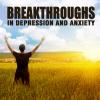NILT for depression - Breakthroughs in dep...
 ILIkeBeer
11 Apr 2016
ILIkeBeer
11 Apr 2016
 Kinesis
15 Apr 2016
Kinesis
15 Apr 2016
Nice job on the interview!
It was a little disappointing to hear your guest express skepticism on whether the lower power LED devices are of much help, compared to higher powered (and expensive) lasers . But I can't think of any physical reason why say 25 mw over 40 minutes wouldn't be just as good as 250 mw for 4 minutes, and some of the successful studies have been done that way. The main disadvantage of the lower powered unit appears to be that sessions would take longer. But I haven't actually tried either yet, so what do I know. I wonder if anyone has more knowledge on this that can help us out.
 sponsored ad
sponsored ad
 ILIkeBeer
17 Apr 2016
ILIkeBeer
17 Apr 2016
Nice job on the interview!
It was a little disappointing to hear your guest express skepticism on whether the lower power LED devices are of much help, compared to higher powered (and expensive) lasers . But I can't think of any physical reason why say 25 mw over 40 minutes wouldn't be just as good as 250 mw for 4 minutes, and some of the successful studies have been done that way. The main disadvantage of the lower powered unit appears to be that sessions would take longer. But I haven't actually tried either yet, so what do I know. I wonder if anyone has more knowledge on this that can help us out.
Thanks!
As far as other people no one I ever talk to including doctors seems to know anything about this.


